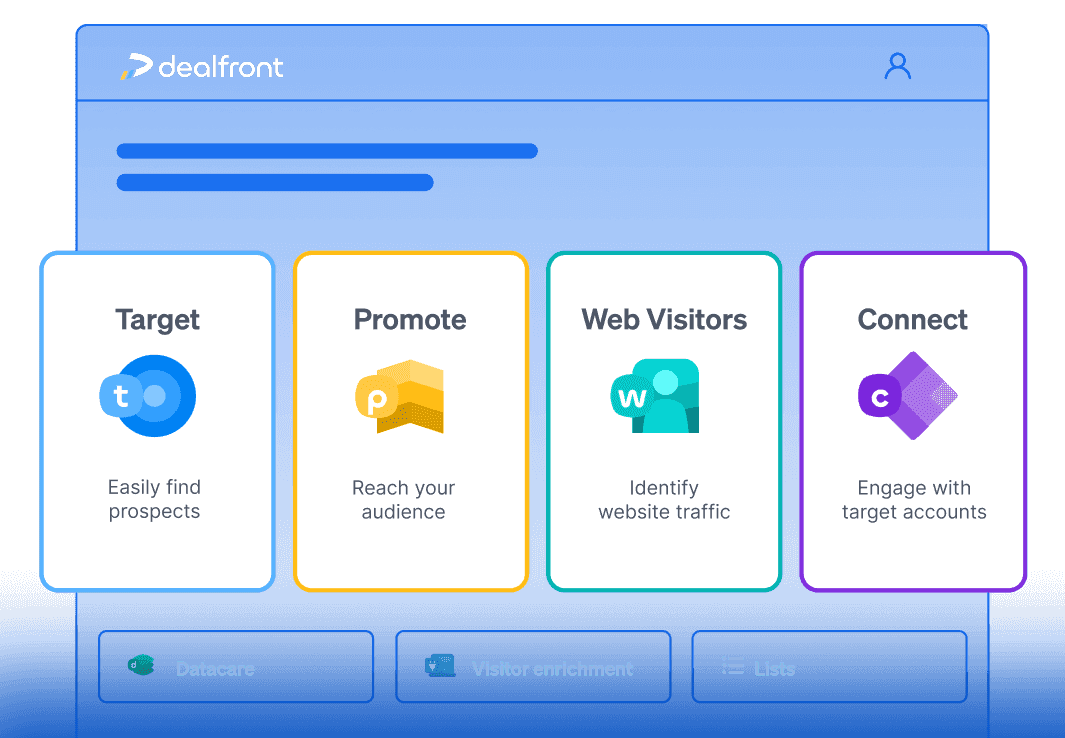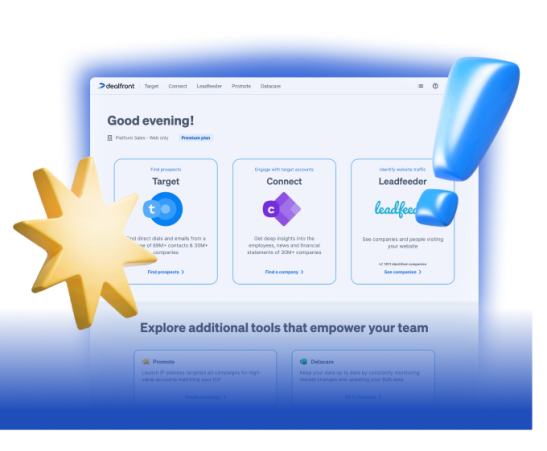There are thousands of tools on the market, but you only need a few to succeed in growth marketing. But what are the best ones and why do you need them? You probably already know one of the biggest growth marketing tools: Google Analytics.
AlleMarketing
Essential Growth Marketing Tools for B2B
Dieser Artikel ist auch auf Englisch verfügbar.

Sometimes called growth hacking tools, they’re software and platforms that businesses use to implement and optimize their growth marketing strategies. These tools can help you with customer acquisition, retention, and conversion optimization to make sure you’ve covered the entire customer journey.
In this article, you will learn more about these tools, how to use them to improve your processes, and reach your goals.
The growth marketing landscape
Traditionally, marketing follows a linear path. Businesses focus on mass communication through television, radio, print, and billboards. It often involves creating campaigns that target a broad audience to reach potential customers.
Since these campaigns are typically planned for specific timeframes, they may have limited adaptability once launched. Their success is often measured in brand visibility and short-term sales spikes.
Growth marketing, however, is more data-driven. It involves continuous testing, learning, and optimizing strategies based on real-time data and user feedback. One of the key distinctions of growth marketing is its focus on the entire customer lifecycle.
While traditional marketing often heavily emphasizes customer acquisition, growth marketing extends its efforts to customer retention, activation, and referral. This holistic approach recognizes the value of long-term customer relationships and aims to maximize the lifetime value of each customer.
Growth marketers use digital tools and platforms to track user behavior, segment audiences, and personalize messages. These tools enable them to tailor their marketing efforts to specific user segments and individual preferences.
Why tools matter in growth marketing
Growth marketing software provides the means to gather and analyze vast data. You can use them to gain insights into customer behavior, preferences, and interactions with your brand. This information makes it easier to make informed decisions and tailor marketing efforts to reach and engage your target audiences.
Without these tools, most businesses would be operating in the dark. And in today’s business world, you can’t afford to rely on guesswork. Data-driven tools will always win.
Segmenting your audience based on various criteria—such as demographics, behavior, and location—is now possible. When marketers can achieve this level of granularity, they can deliver highly relevant and targeted messages to specific segments.
In a rapidly changing business environment, adapting quickly to emerging trends or shifts in consumer behavior is essential. With growth marketing, you can monitor performance metrics in real-time and adjust quickly. This level of agility is not achievable with traditional marketing methods that rely on long lead times and fixed campaigns.
Now that we know what growth hacking tools can do let’s see some of them in action.
5 key growth marketing tools types
The tools used in growth marketing can be broadly classified into several categories based on their primary functions and areas of focus. If we were to list all the tools at your disposal, we would run out of space.
There are tools for the following tasks and examples of each type:
Analytics and tracking (Google Analytics and Mixpanel)
Customer Relationship Management (CRM) (Salesforce and HubSpot CRM)
Content management and creation (WordPress, HubSpot Content Management System, and Canva)
Advertising and retargeting (Google Ads, Facebook Ads Manager, and Dealfront Promote)
Customer support and communication (Intercom, Zendesk, and Freshdesk)
Marketing automation (HubSpot, Marketo, and ActiveCampaign)
Referral and affiliate marketing (ReferralCandy, PartnerStack, and Post Affiliate Pro)
And the list goes on. But for this post, we’ll discuss five tools you shouldn’t overlook.

1. SEO and content marketing tools
Ask any marketer and they will agree that keyword research is the cornerstone of any successful Search Engine Optimization (SEO) strategy. That’s why there’s no shortage of growth tools for keyword research. Some great examples include Moz, SEMrush, and Ahrefs. These tools give marketers valuable insights into the terms and phrases potential customers use to find products. You probably found this blog post by typing “What are growth marketing tools?” into Google.
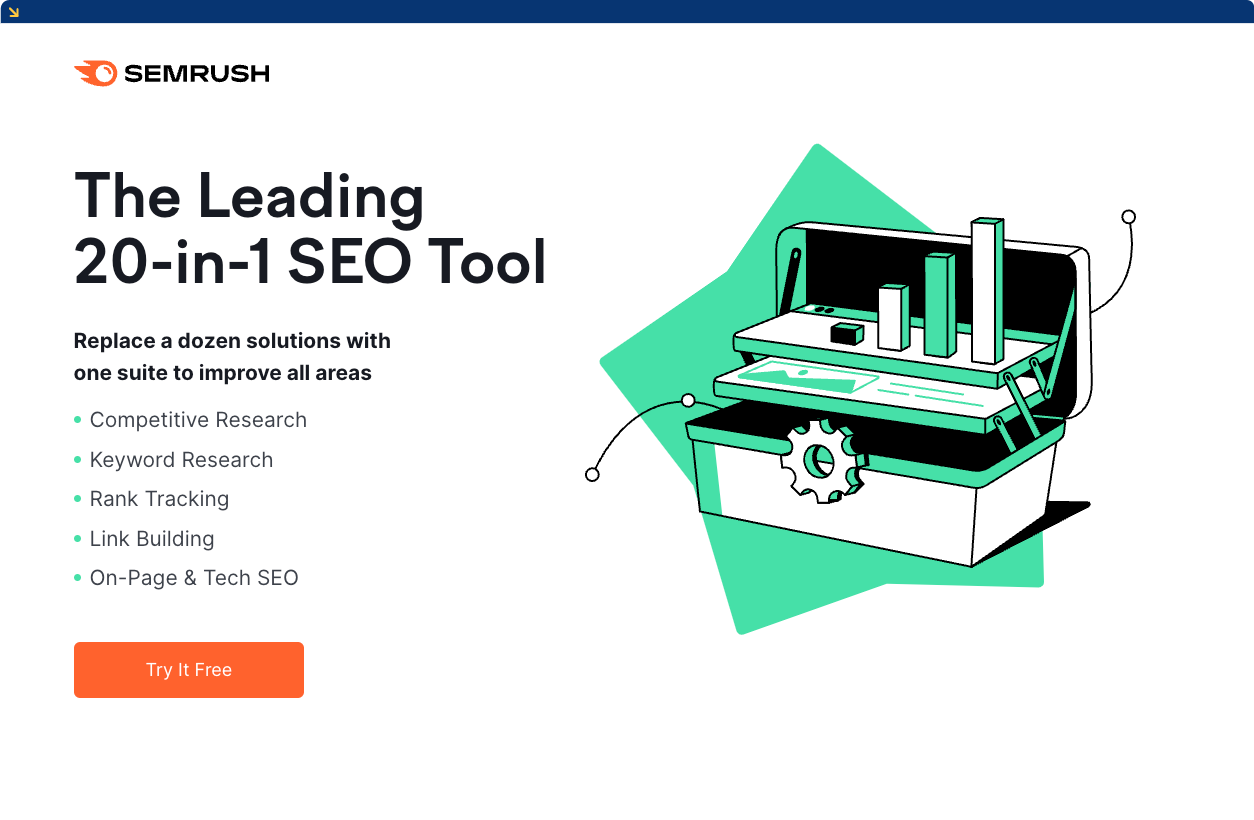
Semrush SEO Tool: https://semrush.com
Understanding these search queries allows you to tailor your content to align with user intent. This ensures that your website is more likely to appear in Search Engine Results Pages (SERPs) when users perform relevant searches. Through this process, you can identify high-performing keywords with reasonable competition, allowing you to prioritize your efforts effectively.
There are also tools for on-page SEO. You can use them to optimize title tags, meta descriptions, headers, and image alt attributes. Additionally, these tools offer suggestions for improving content quality and relevance, ensuring that webpages are search engine-friendly and provide value to visitors.
Tools like Clearscope can be used to refine existing content. Such tools assist in identifying relevant topics, monitoring keyword density, and ensuring proper internal linking. By tailoring content to align with user interests and search intent, marketers can increase the likelihood of their pages ranking higher in search results.
2. Email marketing and automation tools
Email marketing tools provide the means to design visually appealing and compelling email campaigns. Some of these tools include Mailchimp, Constant Contact, and SendinBlue. They help marketers craft newsletters and promotional offers. The best of these tools offer free templates, A/B testing capabilities, and analytics to optimize the effectiveness of the emails sent.
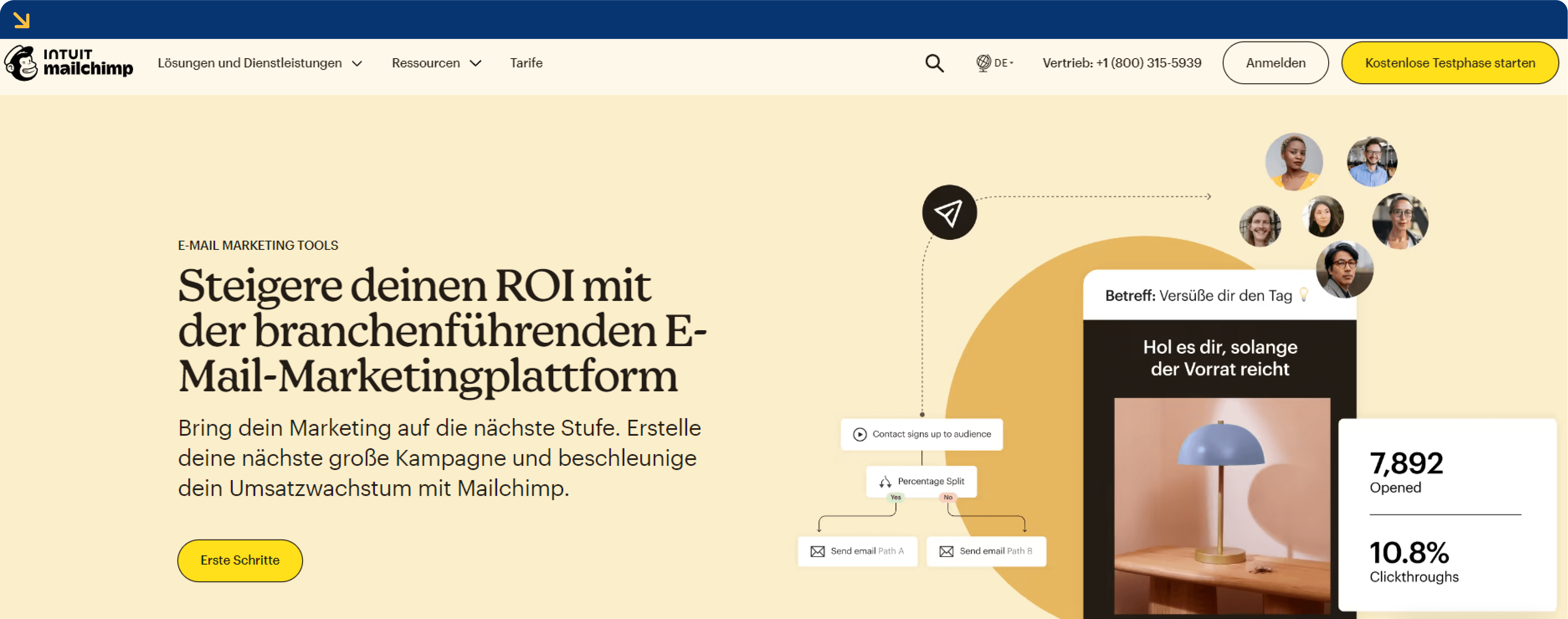
Email automation tool, Mailchimp: https://mailchimp.com/
With list management platforms, you can categorize your subscribers based on various criteria, such as demographics, behavior, or engagement level. This segmentation allows for highly tailored messaging.
For example, a software company might send different messages to trial users versus long-time customers, ensuring the content is relevant and engaging to each group.
Automation is where the real power of these tools comes into play. You can set up workflows and triggers through automation software that sends emails based on specific user actions or predetermined schedules. This means that once a lead enters the system, they can receive messages designed to nurture them through the sales funnel.
For example, a welcome series might introduce a new subscriber to the brand, followed by educational content and promotional offers. This seamless and consistent process ensures that leads receive the correct information at the right time.
3. Social media marketing and analytics tools
Social media management tools are a centralized platform to oversee your presence across various social media channels. Some examples include Hootsuite and Sprout Social.
These tools help you to monitor comments, messages, and mentions, enabling timely responses to audience interactions. Since most of them also have content creation and curation features, you can plan and schedule posts for days, weeks, or even months in advance.
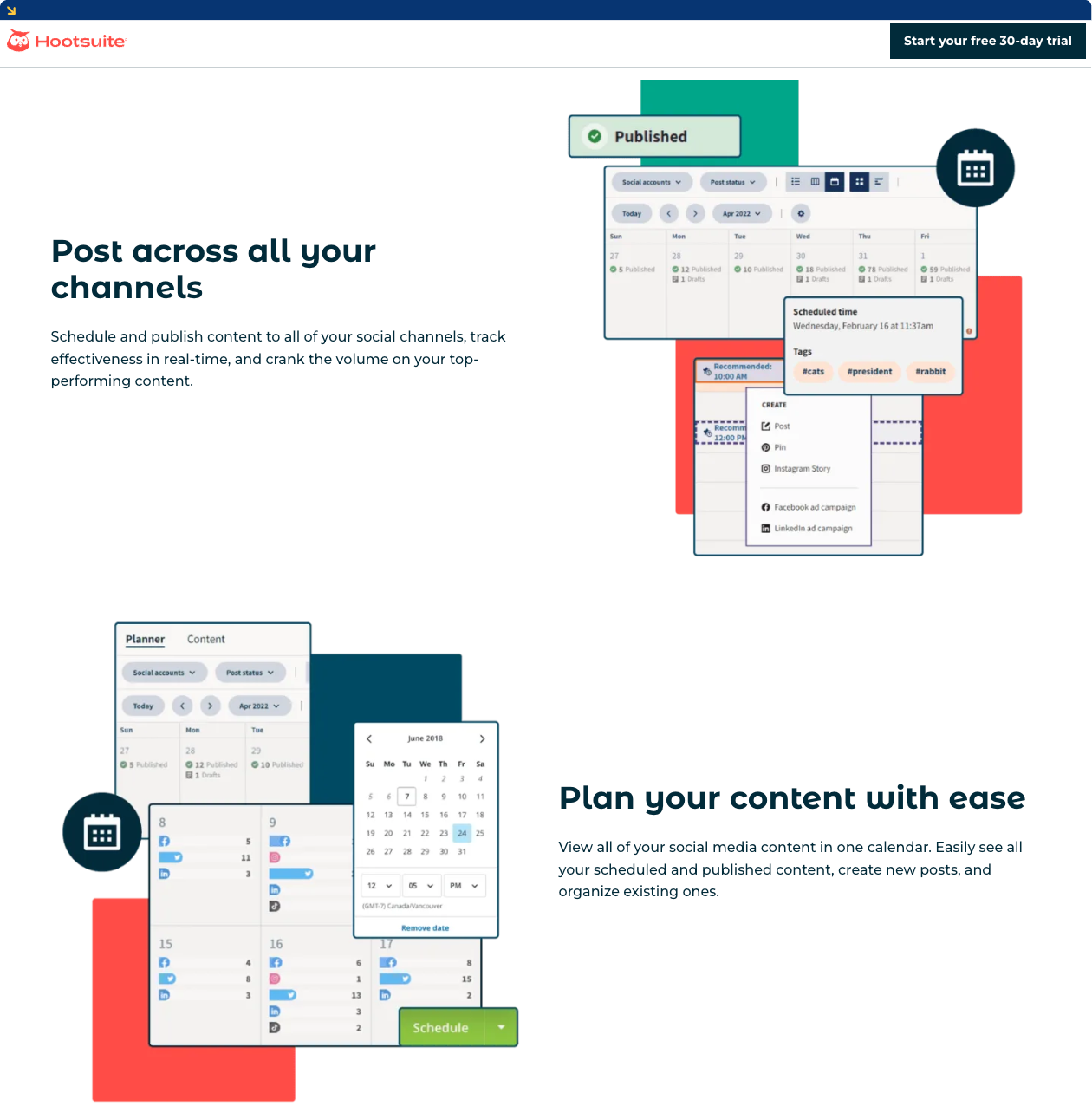
Some of Hootsuite’s use cases: https://hootsuite.com
Analytics tools are the linchpin of effective social media marketing. They provide valuable data and insights into audience behavior, content performance, and campaign effectiveness.
For instance, by analyzing which types of content receive the most engagement, you can refine your content strategy to focus on what works best for that specific audience. Analytics tools also offer demographic and geographic insights about your audience, allowing you to fine-tune your targeting strategies.
4. Conversion rate optimization (CRO) tools
You can identify what resonates best with your audience by testing elements like headlines, images, call-to-action buttons, and overall layout. It’s also possible to refine your website for maximum effectiveness. A/B testing tools make comparing two or more web page versions easy and to determine which performs better regarding conversion goals.
Heatmaps, on the other hand, visually represent visitor behavior on a webpage. They display where users click, scroll, move their mouse, and spend the most time. This information is invaluable for understanding how visitors engage with the content and layout of a page.
For instance, they can reveal if essential elements like buttons or forms are easily discoverable or if users are getting stuck or dropping off at specific points. This knowledge allows for strategic adjustments to improve the user experience and increase conversions.
Dealfront's Leadfeeder lets you understand and engage with companies that visit your website in real-time. With Leadfeeder, you can track visitor behavior and gain insights into their interests. Then, your sales team can use that data for effective prospecting.
Analytics and data visualization tools
Data analysis is the backbone of successful growth marketing strategies. It provides the insights to make informed decisions, refine marketing approaches, and drive sustainable growth.
You gain a comprehensive understanding of your audience by tracking and visualizing market performance. It even becomes easier to tailor your efforts for maximum impact.
One of the critical aspects of data analysis in growth marketing is the ability to track and measure various metrics. These include:
Website Traffic
User behavior
Conversion rates
Customer acquisition cost (CAC)
Customer lifetime value (CLTV)
Return on investment (ROI)
But it’s not enough to have this data. You need platforms like Google’s Looker Studio to create visually compelling dashboards and reports. These visualizations make it easier to identify trends, spot areas for improvement, and communicate insights.
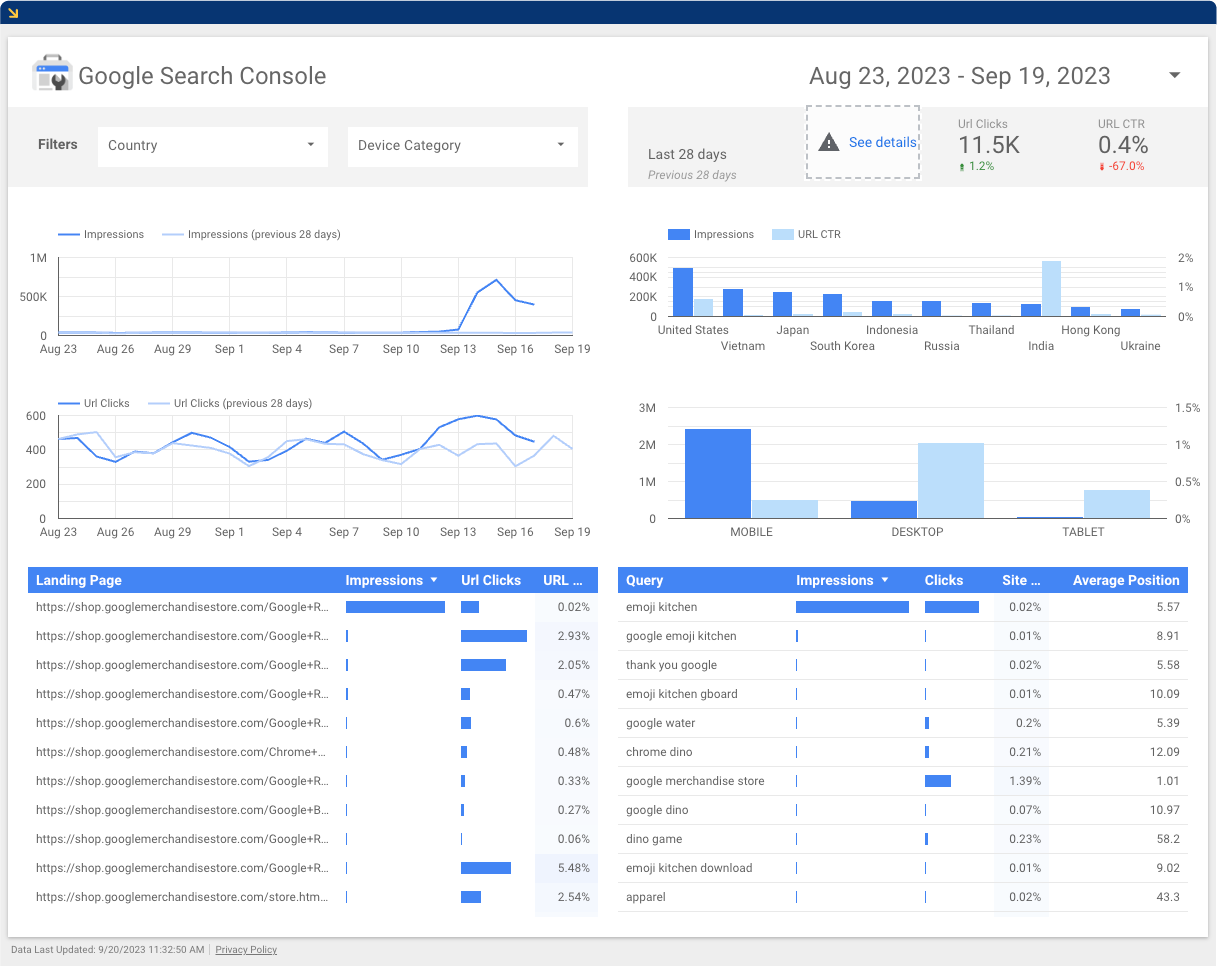
Depiction of Google Search Console in Looker Studio
For example, your marketing team can use visualizations to showcase the impact of a recent campaign on conversion rates or demonstrate the growth trajectory of your customer base.
But with so many tools to choose from, let’s look at how to pick the right one.
Selecting the right growth marketing tools
When selecting growth marketing tools, there are several factors to consider.
First, assess the compatibility of the tool with your business's objectives. Different tools cater to various aspects of marketing. Determine which areas of your marketing efforts need enhancement and choose tools that directly address those needs.
Consider the scalability of the tool. As your business grows, so will your marketing needs. Opt for tools that can accommodate increasing demands without sacrificing performance or functionality.
The tools you choose should integrate smoothly with your existing systems, such as your CRM, e-commerce platform, or content management system. This enables a unified view of customer data and ensures all departments access the same information.
Cost is also an important factor to weigh. Evaluate the pricing structure of the tools, considering factors like subscription fees, additional features, and potential hidden costs. Only choose tools that offer a reasonable return on investment and align with your budget constraints.
Lastly, assess the tool's track record and reputation. Research user reviews, case studies, and testimonials to understand how the tool has performed for other businesses in similar industries or with comparable growth goals.
If you already know the tools you need to add to your toolset, there’s one more thing to do. You need to know what could go wrong moving forward.
Challenges and common mistakes
Recognizing pitfalls and taking proactive steps to overcome them can help maximize the effectiveness of your toolset. One common mistake you can make is not fully understanding the tool's capabilities. So, invest time learning the tool's features and functionalities. Take advantage of the tool’s tutorials, webinars, and documentation. Don’t forget to make sure everyone who needs to use the tool has been onboarded successfully.
Another mistake is not setting clear objectives and KPIs before implementing a tool. It's crucial to clearly understand what you want to achieve and how you'll measure success.
Define specific goals, such as increasing website conversions or improving email open rates. Establishing clear KPIs will provide a benchmark for evaluating the tool's effectiveness and allow you to track progress toward your goals.
Overlooking data quality and accuracy is a common oversight. Garbage in, garbage out applies here. Ensure that the data you input into the tool is accurate and reliable. Lastly, regularly audit and clean your data to maintain its integrity. This will prevent misleading insights or ineffective automation based on faulty information.
If you’re keen on using data-driven marketing tools, Dealfront’s go-to-market platform can help you discover more opportunities, qualify leads, convert them into customers, and optimize your marketing team's performance.
Staying updated in a dynamic landscape
The increasing number of growth marketing tools is enough proof that the methods of attracting and maintaining customers are changing. You need to adapt and adopt the most intuitive tools to stay competitive. The bottom line is going with an option that gives you ultimate control, visibility of data, yet allows you to automate the most complex tasks.
Having the right tools means you can save money, time, and other valuable resources, so don’t hesitate to try some of the tools discussed in this article. Some businesses that seem always to do better owe their success to growth marketing tools. Yours could be one, too.
Das könnte Dich auch interessieren
MehrVerwandle Deine Websitebesucher in B2B-Leads

